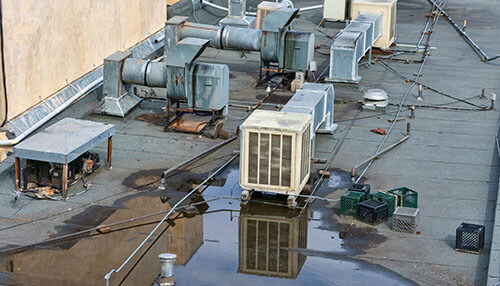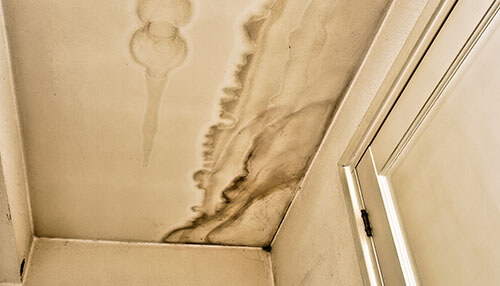Commercial and industrial buildings are typically bigger in size, and they host more people than residential buildings. They also have larger, more complex systems with expensive, sophisticated machines. Therefore, water damage in commercial and industrial buildings is often more extensive and expensive.
It’s, therefore, in the best interest of every business management to understand the causes and consequences of water damage discussed in this piece.
This article will also look into the mitigation measures you can take against the consequences of water damage, like hiring professionals such as Summit Cleaning & Restoration. Keep reading to learn more.
Cause Of Water Damage
Leaking pipes and plumbing issues are major causes of water damage in office buildings. Leaking pipes can be caused by the pipes bursting due to changes in pressure or cold weather. Pipes can also leak because they’re corroded or improperly fitted pipes.
However, there are other causes of water damage that you should look out for. They include:
1. Natural Disasters
Natural disasters like floods and thunderstorms can cause water damage. Commercial buildings are especially at risk of being flooded when there’s no one in the office, say during weekends, to create paths for stormwater drainage or to shut the windows to prevent moisture from slipping into the office’s walls.
Other natural disasters include snowstorms. Snowstorms damage the roof increasing the chances of roof leakages. Roofs can also be damaged when the snow is removed.
2. A Broken HVACV System
The air conditioning system of the HVAC works by pulling humidity from the air to make it comfortable. The humidity appears in the form of condensation in the HVAC ducts and coils.
Unfortunately, the ducts wear out with time. When the ducts are damaged, they eventually start leaking moisture into the building. The severity of the moisture is felt over some time. Therefore, it’s good to carry out regular HVAC maintenance and repair to avoid such incidences.
3. Poor Drainage Systems
Poor drainage systems, such as malfunctioning gutters, can lead to roof leaks. Also, poor drainage systems like sewer clogs can cause sewage water and rainwater to mix. During storms, the contaminated water may flood the office buildings posing health risks, one of the direst consequences of water damage.
4. Leaks In The Sprinkler System
A sprinkler system is a firefighting device installed in buildings to put out fire at its infancy stage. The system is fixed with its head facing towards the building area, which is a fire hot spot. The other end of the sprinkle has pipes with water at high pressure, which is used to put out the fire.
Sometimes the pipes in the sprinkler leak, releasing moisture on the walls and floor of the building, causing water damage. One of the ways to tell a leakage in your sprinkler system is standing water next to the sprinkler and contacting a leak detection service in Riverside.
7 Consequences Of Water Damage In Commercial Buildings
Now that you understand what water damage is and some of its leading causes, here’re some of the impacts of water damage on office buildings.
1. Growth Of Molds
Molds grow in a moist environment. When there’s a leakage in your building, either due to leaking pipes, a leaking sprinkler system, or a leaking roof, it creates the perfect environment for molds to grow. When molds grow on the walls, ceiling, or floor of a building, it causes structural damage since molds feed on structural organic matter. Therefore, materials like wood, fiber from insulation, and paper backing are eaten away, causing the building structure to be weak. The process of cleaning such damage is equally very complicated and expensive.
Mold also damages paints and other interior design features. Over time, mold creates a musty smell in the office, triggering allergies among employees, especially those suffering from respiratory diseases like asthma. A musty office may also make a bad impression on clients, and it may reduce the motivation of employees to give their A-game.
2. Water Stains
When water stagnates on the rooftop, it begins to form stains on the ceiling. The water stains weaken the ceiling, and eventually, water may start sipping through the ceiling. It could also cause the ceiling to come down, increasing the risk of damaging office equipment and machines.
Other than the ceiling, water stains may form on the walls and the floor of the building. On the floor, the water eventually leads to cracked and loose tiles. The other negative effect of stained walls is that the stagnant water dampens the room. As a result, the office has a musty smell, leading to respiratory diseases among employees.
The dampness also wets paper documents causing the prints to be erased, and hence important business information may be lost in the process.
3. Damage Of Equipment
Typically, office buildings have different electronic devices to aid in running office tasks. The devices include
- A multifunctional printer
- Computers and the devices encompassing them
- Computer network and Internet connection
- A business telephone system
- Paper shredder
- Mailing equipment
- iPad, smartphone to mention but a few gadgets
If water damage is caused by flooding, this equipment will likely be damaged, and the management will have to buy others. However, it’s not only large-scale water damage that damages equipment. Small disasters like a leaking roof or an extremely humid office can cause equipment damage through rust.
Although the impact of rust may not be felt instantly, it’s gradual. For example, rust eats away the metal’s mass, weakening the metal so it can’t support its weight. Eventually, metallic equipment and devices become damaged, and they may either need to be cleaned or repaired, and sometimes you may have to buy new equipment.
4. Property Damage
Besides damaging your office equipment, water damage also risks damaging your property. First, after exposure to water damage for an extended period, the integrity of the building becomes compromised. For example, as mentioned before, molds cause structural damage by eating away the organic components of the building material. Also, water stains damage the ceiling, walls, and floor fixtures, sometimes forcing these parts of the buildings to be replaced entirely.
Other than the building structure, water may also damage stock and supplies. For example, if a warehouse containing a food supply is flooded, the food will be dampened, creating suitable conditions for the growth of molds. These molds may lead to aflatoxin growth, making the food poisonous for human consumption.
5. Occupant Health Risk
Water damage poses health risks to the occupants of the office. For example, the growth of molds creates smelly, moist air that may lead to respiratory complications such as asthma.
Additionally, water damage may lead to biohazards. Different types of water cause biohazards
-
Greywater
This is a water that doesn’t contain fecal matter. Although greywater may not lead to any bio-hazards, it may cause property and equipment damage.
-
Blackwater
This is a water that contains fecal matter. Blackwater is often a result of a mixture of floods and sewage. Coming into contact with black water increases the chances of getting diseases like Cholera and Bilharzia.
Additionally, if black water is left standing for long, it may lead to algae bloom growth. These algae are known for causing health conditions like diarrhea, liver failure, memory loss, nausea, and vomiting.
6. Increase In Utility Bills
A leak in the plumbing system may lead to an increase in the water bill. Similarly, if moisture destroys equipment such as the HVAC, it won’t work efficiently. As such, it may require more power to heat the room and cool it. As a result, the power bill of the commercial property may increase.
Typically, commercial properties consume utilities in large amounts; hence the bills are high. An increase in utility consumption and the consequent bills may mean that the business isn’t sustainable or its profit margins are reduced.
7. Financial Cost
The financial cost of water damage is one of the most serious consequences. Financial costs manifest themselves in different ways. For example, when the building’s structures are destroyed, it may require cleaning for rust, repair, and sometimes restoration of a damaged roof. All these remedies require money which is an unplanned financial burden to the company.
Additionally, tenants who have rented rooms for business may decide to vacate when the building is damaged. As such, the commercial building owner suffers the loss of income from the tenants.
When water damage occurs and repairs have to be done, some businesses lose income and operating hours, which is another form of the financial cost. Additionally, when occupants of the building contract disease due to water damage, they incur the cost of treatment.
Discover reliable plumbing solutions with https://www.mrrooter.com/detroit/, your trusted partner for all residential and commercial plumbing needs. From routine maintenance and repairs to advanced diagnostics and 24/7 emergency services, their expert team is committed to providing top-quality workmanship and unmatched customer care.
Wrapping It Up!
Water damage in commercial buildings may be caused by leakages in the plumbing system, natural disasters such as floods, poor drainage systems, a broken HVAC system, and a leaking sprinkler system, among other causes.
Commercial buildings house is very sophisticated and expensive machinery. They also host many occupants, including employees and customers. Therefore, the impact of water damage in commercial buildings is far more severe than in other buildings. These consequences include the financial implication of cleaning, repairing, and restoration of the damaged property and equipment. The article has discussed six more consequences that you should familiarize yourself with to be better equipped to protect your office building.



